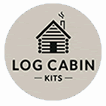Get a Wood-Burning Stove to Heat Your Garden Cabin
Call Now 01342 477774
The Allure of Wood Heat: Why Choose a Wood-Burning Stove?
As the seasons shift and the air grows brisk, the prospect of a warm, inviting garden cabin becomes all the more appealing. Among the many heating options available, few conjure the rustic charm and efficient warmth of a wood-burning stove. In this extensive guide, we'll delve into the intricacies of buying a wood-burning stove to heat your garden cabin. From understanding the benefits to navigating the selection process, we'll equip you with the knowledge needed to make an informed choice.
A. Ambiance Beyond Compare
A wood-burning stove bestows upon your cabin an unparalleled ambiance. The flickering flames, the gentle crackle of logs, and the earthy aroma of burning wood evoke a primal connection with nature.
B. Economic Efficiency
Wood, often more accessible and affordable than other fuels, renders wood-burning stoves an economically sound choice. In many locales, procuring firewood locally or even harvesting it from your property is a viable and cost-effective option.
C. Sustainability and Self-Sufficiency
Opting for a wood-burning stove aligns with a sustainable lifestyle. Wood, when sourced responsibly, is a renewable resource. It can be considered a carbon-neutral heating option, reducing your environmental footprint.
II. Navigating the Landscape of Wood-Burning Stoves
A. Understanding Stove Types
Wood-burning stoves come in various types, including traditional cast iron, modern steel, and soapstone stoves. Each offers unique benefits in terms of aesthetics, heat retention, and efficiency.
B. Sizing Matters
Selecting the right-sized stove is paramount. Factors like cabin dimensions, insulation levels, and prevailing climate conditions play a crucial role. An undersized stove will struggle to heat your space, while an oversized one may lead to overheating.
C. Efficiency and EPA Certification
Prioritize stoves certified by the Environmental Protection Agency (EPA). These models meet strict emission standards, ensuring both efficiency and reduced environmental impact.
III. Finding the Perfect Fit: Installation and Safety
A. Clearance Considerations
Ensure ample clearances from combustible materials. Proper ventilation is essential to prevent the buildup of dangerous gases. Follow local building codes and regulations.
B. Flooring and Heat Shields
Install non-combustible flooring, such as stone or tile, beneath the stove. Consider using a heat shield to protect nearby walls or combustible materials.
C. Seek Professional Installation
While some may opt for a DIY approach, professional installation guarantees safety and compliance with local regulations. A certified installer ensures the stove is placed correctly and the chimney is properly drafted.
IV. Operation and Maintenance: Maximizing Stove Performance
A. Quality Firewood
Burn seasoned firewood, dried for at least six months. It ignites more easily, burns cleaner, and produces more heat. Avoid using green or unseasoned wood.
B. Regular Cleaning and Inspection
Maintain your stove by routinely cleaning ashes and checking for creosote buildup. A clean stove operates more efficiently and reduces the risk of chimney fires.
C. Safety First
Install carbon monoxide detectors and fire extinguishers in the cabin. Consider using a spark guard to prevent embers from escaping.
Conclusion: A Hearth to Call Your Own
In selecting and installing a wood-burning stove, you not only warm your cabin but also cultivate a deeper connection with the natural world. The enchanting glow of the flames, the comforting heat, and the soothing crackle of burning wood transform your garden cabin into a sanctuary for all seasons.
With this guide, you're poised to embark on a journey towards a cozier, more inviting garden cabin—a space where the warmth of wood kindles not just the fire, but the soul.
